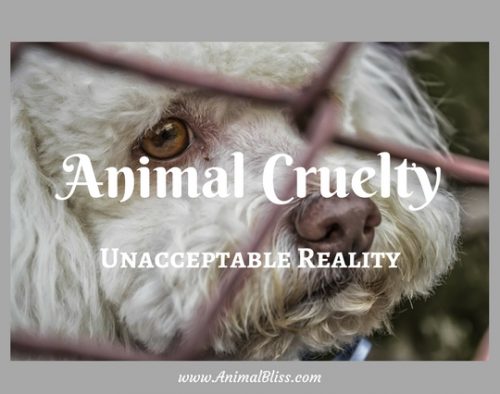Animal cruelty persists as a harrowing reality in our society, perpetuated through various everyday acts that often go unnoticed or unchallenged. Despite the nobility of our intentions, the casual interactions humans have with animals can oftentimes veer into morally reprehensible territory. To articulate the gravity of the situation, it is imperative to identify and delve into specific examples that embody this unsettling phenomenon. This analysis will explore the bewildering spectrum of animal cruelty, from neglect and exploitation to psychological torment, revealing how these insidious actions are interwoven into the daily fabric of life.
First and foremost, one must consider the realm of **neglect**. Neglect can manifest in myriad forms, often underappreciated, yet deeply detrimental to the well-being of animals. In urban environments, it is common to witness pets left unattended for extended periods, lacking basic necessities such as food, clean water, and adequate shelter. For instance, dogs tethered to a tree or left outside in inclement weather endure not only physical suffering but also emotional distress. The resultant loneliness can lead to behavioral issues, increasing the dog’s anxiety and vulnerability. Furthermore, the repercussions of such negligence compound as these animals lack proper socialization and medical care, perpetuating a cycle of suffering that may span generations.
Exploitation of animals for entertainment purposes remains a poignant concern. The practice of keeping captive animals in circuses or marine parks underscores a broader societal indifference toward animal welfare. Bears forced to perform tricks or dolphins trained to execute elaborate routines inevitably experience a lifetime of confinement in unnatural environments. Their desire to roam, hunt, and engage in instinctual behaviors is stifled, leading to profound psychological issues. Additionally, the spectators who applaud these performances often remain oblivious to the underlying cruelty embedded in such entertainment. This stark dissonance between enjoyment and the source of that enjoyment calls for a critical reevaluation of our entertainment choices.
Moreover, the **cosmetic industry** serves as another troubling arena where animal cruelty is perpetuated for the sake of vanity. Many cosmetics companies still engage in the archaic practice of animal testing. This torturous method includes various forms of maltreatment—ranging from applying substances directly into the eyes of rabbits to forcing them to ingest toxic chemicals. The sheer redundancy of such practices raises ethical questions regarding the necessity of inflicting pain on sentient beings to achieve merely superficial human desires like beauty and aesthetics.
Additionally, the pervasive issue of **factory farming** provides a shocking glimpse into the systemic cruelty prevalent in modern agricultural practices. Animals bred for consumption are often subjected to grotesque living conditions, deprived of any semblance of a natural lifestyle. Captive in cramped cages, chickens endure perpetual stress; pigs are kept in gestation crates barely large enough for them to stand or turn around. The horrific reality of routine practices—such as debeaking or tail-docking without anesthesia—signifies a deeply entrenched willingness to disregard animal welfare in the pursuit of profit. It remains crucial for consumers to engage critically with their food choices and support humane farming practices that prioritize compassionate treatment of animals.
The realm of **domestic abuse** also extends its vicious tendrils into the lives of innocuous pets. The disturbing correlation between domestic violence and animal mistreatment emerges as a heartbreaking statistic in countless regions. In homes where human residents experience violence, it is not unusual for pets to become unwilling victims as well. Reports abound of pets being physically harmed as a means to control or intimidate victims, thus escalating the already heinous cycle of abuse. Such patterns underscore the dire need for comprehensive educational programs aimed at elucidating the interconnectedness of aggression toward animals and personal relationships, reinforcing the notion that a compassionate society recognizes the importance of treating all creatures with dignity.
Furthermore, the **illegal wildlife trade** deserves significant attention. Driven by capitalism and demand for exotic pets, traditional medicine, and ornamental decor, this nefarious industry wreaks havoc on biodiversity. Elephants, tigers, and countless other species are poached, often leaving communities devastated and ecosystems imbalanced. The shockwaves permeate far beyond the immediate fatalities; the loss of key species can trigger cascading effects throughout their habitats, imbuing further significance upon our responsibility to protect these animals from extinction.
Compounded by societal desensitization, individuals often overlook these daily realities. The shocking juxtaposition of personal lives and animal treatment indicates a broader moral failing. This dissonance manifests in our choices regarding consumption, entertainment, and advocacy. Importantly, becoming an informed advocate requires not only acknowledgment of these varied expressions of cruelty but also decisive action aimed at fostering change. In an era where information travels instantaneously, the opportunity to advocate for humane practices and raise awareness about animal rights is unprecedented.
In conclusion, the spectrum of everyday acts of animal cruelty encompasses neglect, exploitation, abuse, and indifference that permeate our interactions with animals. By recognizing and addressing these acts across various settings, society can take strides towards a future wherein all creatures, regardless of their species, are treated with the respect and compassion they inherently deserve. The responsibility lies within each of us to advocate for change, educate ourselves and others, and ultimately strive for a communal ethos that aligns with the principles of kindness and justice, transcending beyond human interests. A more compassionate world can only be built upon foundations of awareness and empathy, urging a collective commitment to end the shocking realities of animal cruelty.









